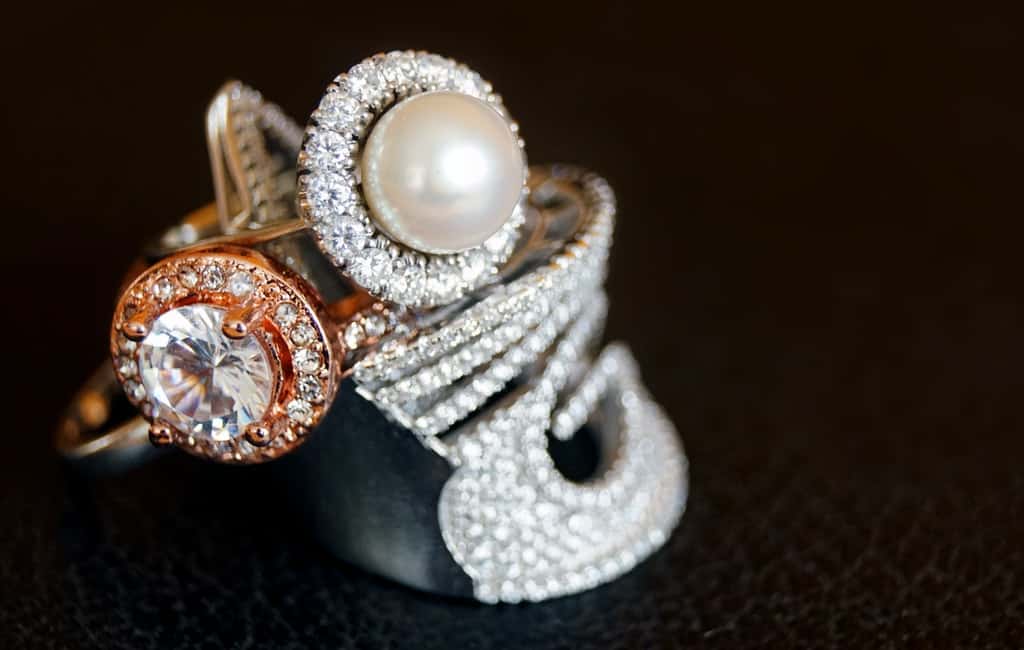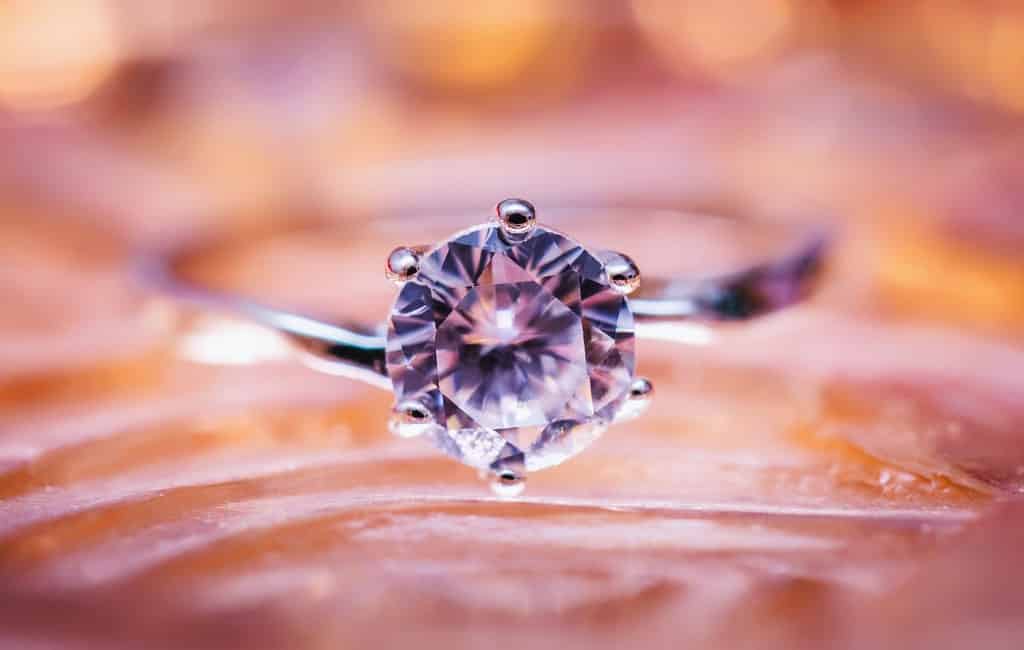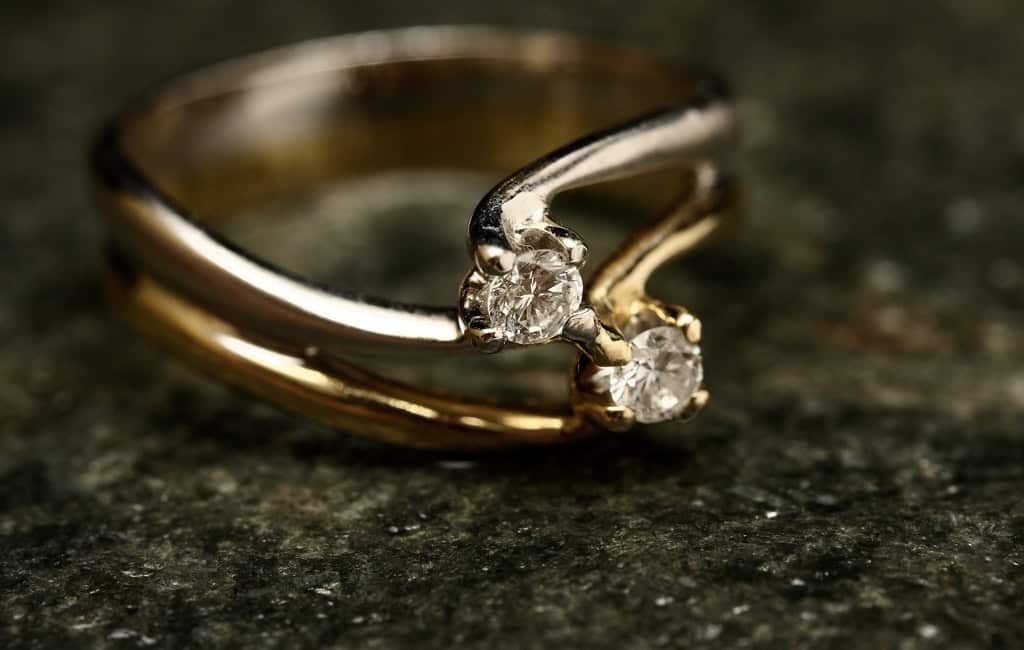Gems are very valuable mineral deposits (often in crystalline form) that are usually found buried deep beneath the earth’s surface, where they are formed as a result of the action of physical forces on substances such as pure carbon (in the case of diamonds). At other times, gemstones are merely formed as a result of chemical reactions that take place beneath the earth crust. And, of course, there are those times when gemstones are not formed beneath the earth’s crust at all (as in the case with pearls, which are formed from oysters and other mollusks).

WHAT ARE DIAMONDS?
Diamonds are a very unique group of gemstones which are formed deep beneath the earth’s crust (like many other gemstones). They are formed when deposits of pure carbon, which exist miles beneath the surface of the earth, are subjected to very extreme forces of heat and pressure. This immense quantity of heat and pressure works upon the pure carbon deposits to transform it to diamond crystals by reordering the atoms of the pure carbon into a rigid crystal lattice (or structure) that is bound tightly by strong covalent bonds. As a result of these strong bonds, a diamond’s rigid crystal lattice is usually impenetrable by other elements or compounds.
In rare cases when other elements and compounds do manage to gain entry into a diamond’s crystal lattice, while the diamond is still being formed, such intrusion may result in flaws, which affect the quality of the diamonds (particularly its clarity). Such flaws are impurities which may be physical or chemical in nature. Sometimes, they even lead to the formation of color in diamonds. For instance, when the element known as boron gets into a diamond’s crystal lattice, during its process of formation, the diamond usually turns blue. However, for yellow diamonds, nitrogen is usually the causal factor.
Apart from blue and yellow, diamonds also exist naturally in colors such as black (when impure carbon infiltrates its crystal lattice), purple (when the combination of oxygen and nitrogen gets into its crystal lattice) and so on. Green diamonds, however, are usually formed – not as a result of impurities in the form of foreign elements but – as a result of exposure to radiation. And nobody really knows what is responsible for the formation of red diamonds.
Nevertheless, colored diamonds are usually cherished – and highly valued – for their rarity.

WHAT ARE DIAMONDS USED FOR?
Diamonds have many uses, most of which are concentrated in two main fields, which are; fashion and other industries.
Diamonds have been used in fashion for several thousands of years. Not only have they been used in the making of several ancient crowns and thrones (of actual, real-life royalty), they have also been an item that has been used to denote elegance, status and class for millennia. Diamonds are so wildly popular and sought after for many reasons.
First of all, they compliment everything. Due to the fact that this gemstone is typically white or colorless in its ideal, high-quality state, they can and have been worn with anything; virtually every style of clothing, attire or finery out there can be perfectly complimented with a diamond. Another reason why diamonds are so popular is the fact that they are the hardest known gemstones in the world. In fact, for a very long time now, diamonds have been regarded as the hardest materials known on earth (although, this may no longer be fully accurate, as there are now other materials that are known to be just as hard – and even harder – than diamonds).
This sentiment, however, is one of the reasons why diamonds are so highly in demand across the world; particularly when it comes to occasions such as proposals, engagements and weddings. This is because culture and society has lent their voices to the brilliant phenomenon that is the remarkable hardness of diamonds, and for centuries now, this precious gemstone has been said to represent deep and undying love (which of course, everybody wants; especially newlyweds).
The diamond’s hardness also happens to be one of the properties that make it very useful in other industries, where it is used for industrial applications such as mining and drilling.
ARE DIAMONDS BAD LUCK?
Culturally, many virtues and attributes have been attached to diamonds. So far, we’ve mentioned how they have been used to represent elegance, class and status, as well as deep and undying love. Diamonds have also been used to represent royalty, strength, confidence, wealth, longevity and prosperity among other things. However, some people say that diamonds may also represent bad luck in certain instances.
The idea that a particular type of gemstone may represent bad luck is not exactly a new one. Particularly when such gemstone happens to be black in color (although this belief may not cut across all the cultures across the world; which means such gemstones touted to be bad in some cultures may actually represent good luck in some cultures). Naturally black diamond or carbonardo is one of such gemstones.
While some cultures see this gemstone (i.e. black diamond) as a symbol of formality, authority, strength, mystery and elegance, others see it as a bad omen since the color black is often used to denote evil, fear, grief, death, anger and sadness (particularly in mainstream media and pop culture). In ancient India, for example, black diamonds used to be seen as a sign of misfortune or a curse, because they bear a striking resemblance to the eyes of spiders and snakes. A representation of this belief even found its way into the legend of Yama, the god of death (although, it may be that it was the legend that actually brought about the belief that black diamonds are symbols of death). Therefore, some people in India still belief that black diamonds are harbingers of death to this day.
Asides black diamonds, other gemstones such as black opals and black pearls may also be used to signify bad luck. In the case of pearls, they don’t even necessarily have to be black, the sentiment of “pearls for tears” is believed in some cultures, which is why pearls are not seen as suitable gifts between lovers or accessories for brides on their weddings (people belief that such a relationship or marriage would end in tears).

